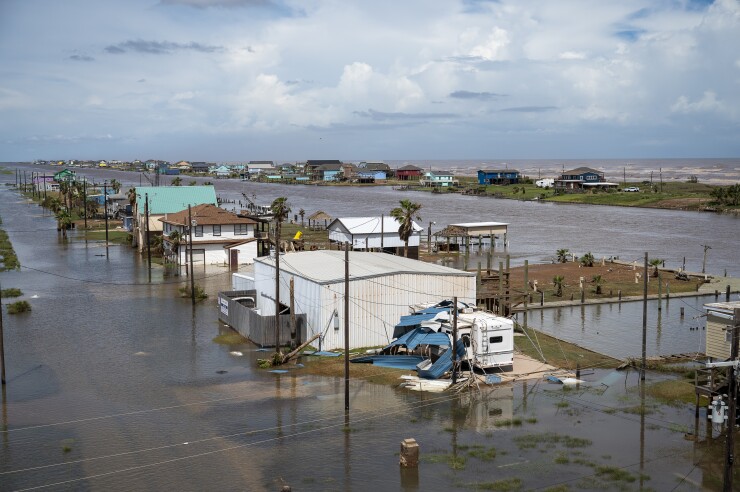(Bloomberg) --One of the most successful hedge fund strategies of recent years — insurance-linked securities — is latching on to an
Parametric insurance, where policyholders get quick payouts if weather-related metrics are met, used to be the preserve of small businesses and farmers in developing countries. Now, it's a
"It's much more challenging to find capacity for this kind of coverage with traditional insurance," he said.
Companies using parametrics now include French pharmaceutical firm Sanofi SA, telecommunications company Liberty Latin America, and renewable energy investor Greenbacker Capital Management. The market for such products is
It's a shift that's caught the attention of ILS investment managers. Insurance-linked securities, which a Preqin ranking listed as the
In recent years, that model has generated market-beating returns.
Investment funds based on parametric insurance have the potential to beat cat bond returns, according to Rhodri Morris, a portfolio manager at Twelve Securis. The Zurich-based
"We aim to return a couple of percentage points above the cat bond market," Morris said in an interview.
The fund, which is the first of its kind, has so far attracted about €85 million ($99 million) of capital. Morris says the expectation is that it will draw as much as €200 million next year.
A key attraction for investors is they can avoid so-called trapped capital, according to Morris. Investors in cat bonds sometimes wait for months — or even years — before loss rates are assessed and payouts settled. Investors in a parametric fund will generally know within days whether an underlying insurance contract has paid out or not.
The Lumyna-Twelve parametric fund has drawn "genuine interest" from investors, Morris said. But they've also had questions, and there's a number of important factors to consider, he said.
"Investors need to understand that you're giving up liquidity in some part of the portfolio," Morris said. "But the benefits you're getting are higher returns and the lack of trapping."
The fund has received seed capital from what it describes as a "top-tier European institutional investor." Morris declined to identify the firm by name.
Luca Albertini, chief executive of Leadenhall Capital Partners, a London-based firm which oversees $4.5 billion in ILS assets including a few private parametric deals, says that while investors benefit from the transparency and quick payouts of parametric products, they need to pick investments with care.
"The attractiveness of parametric comes and goes," and "you need to be watchful that the risk-reward remains attractive compared to alternatives in the same space," such as cat bonds, he said.
The Lumyna-Twelve fund will be structured so that part of the capital will support deals it strikes itself. For these, it will rely on Descartes to structure the transactions, and on Generali Investments — the parent of Lumyna — to provide the insurance capital to back the product. Generali Investments is the asset-management arm of Assicurazioni Generali SpA.
Returns are also based on parametric deals done by Descartes and its partner Generali for their own clients. These will be bundled, with the Lumyna-Twelve fund free to invest in a chunk of the end product.
At the same time, the fund plans to invest 40% or more of its capital in catastrophe bonds to provide "a liquid element" in the fund, according to Morris.
Climate-related economic losses in the US have reached $6.6 trillion over the past 12 years, so figuring out how to deal with extreme weather events is no longer just an environmental concern, but a "significant financial issue," Bloomberg Intelligence said in a recent report.
Against that backdrop, corporate demand for parametrics keeps growing.
Liberty Latin America says it bought "several hundred million dollars worth" of hurricane parametric insurance in 2024. When Hurricane Beryl
Descartes has also launched parametric cover for solar farms against tornado damage. And Aon Plc, an insurance broker, has together with Swiss Re and
Parametric deals are also increasingly popular among renewables firms, with solar plants in Texas acquiring policies against hailstorms, and wind farms using them as a financial buffer when the wind fails to blow and revenue drops.
For Greenbacker Capital Management, the parametric coverage it received from Munich Re, in conjunction with a "wind proxy hedge" that it structured with kWh Analytics, helped it attract lenders, according to Dan de Boer, interim chief executive at Greenbacker.
"It allowed us to raise 20% more debt capital" for a US wind project, he said.






